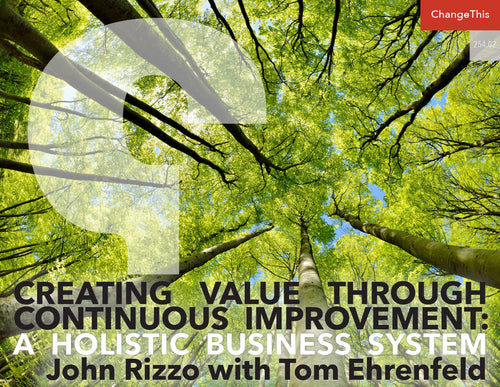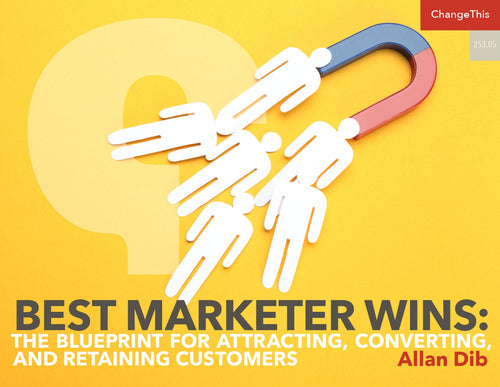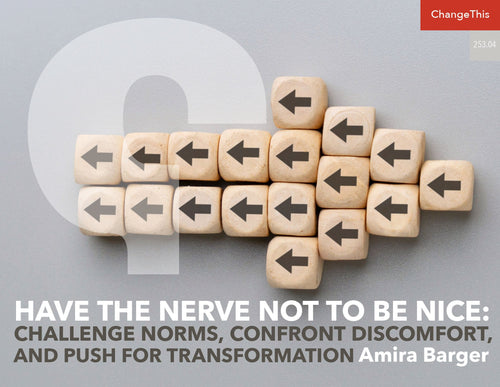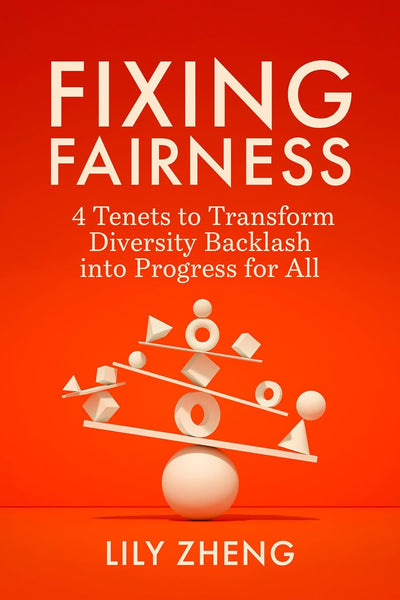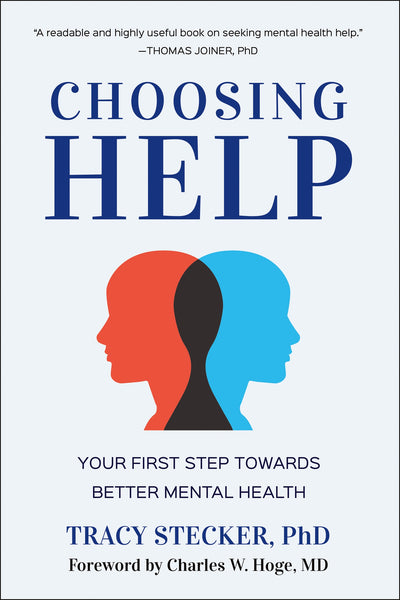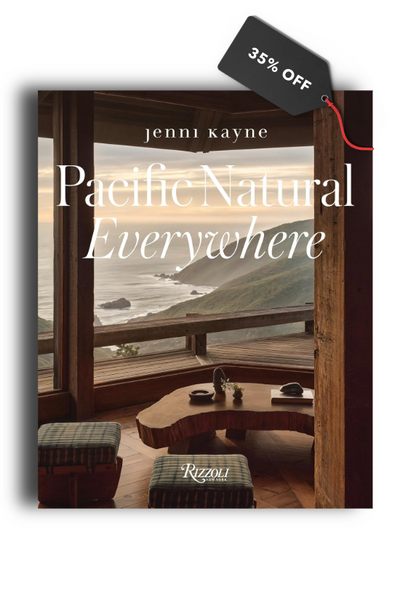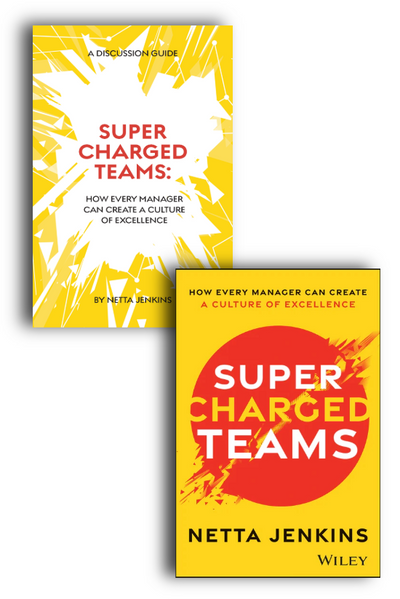The Downsides of the Urban Revival: The New Urban Crisis and How We Come to Grips With It
"As the middle class and its neighborhoods fade, our geography is splintering into small areas of affluence and concentrated advantage, and much larger areas of poverty and concentrated disadvantage."
I was born in Newark, New Jersey, in 1957, back when it was a thriving city, bustling with iconic department stores, morning and evening newspapers, libraries and museums, a busy downtown, and a large middle class.
My parents both came of age in the city’s Italian district, and they still lived there when I was born, in an apartment near the city’s verdant Branch Brook Park. My father had left school in the seventh grade to work in a factory alongside Italian, Polish, Irish, German, Hispanic, and Black laborers. Except for his stint in the military, when he stormed the beaches at Normandy and fought in some of the great battles of World War II, he walked through its doors every working day of his life, starting as a laborer, climbing the ladder to foreman, and ultimately becoming one of the plant’s managers.
My parents, like millions of other Americans, moved to the suburbs when I was a toddler. They chose the small town of North Arlington, about a fifteen-minute drive from Newark. They did so, as they often reminded me, because of the good schools the town offered, particularly the Catholic school, Queen of Peace, which they believed would prepare my brother and me for college, putting us on a path to a better life. One of my mother’s sisters, my aunt Lonnie, already lived there; her husband, my uncle Walter, put himself through night school at Newark College of Engineering for both his bachelor’s and master’s degrees in chemical engineering, and then rose through the ranks to become a senior executive at Colgate Palmolive. Blue-collar families like mine and more affluent ones like my aunt and uncle’s still lived side by side in the same neighborhoods. Despite our different economic circumstances, we were all part of the same American Dream. Even though we had moved out of Newark, we still visited the old neighborhood on most Sundays, joining my grandmother and the rest of the family who still lived there for large Italian suppers.
Then, one hot July day in 1967, when I was nine years old, I saw the city overtaken by turmoil. As my father drove us into the city, the air grew thick with smoke: Newark was engulfed in its infamous riots, and police, National Guardsmen, and military vehicles lined its streets. Eventually, a policeman flagged us down to warn us about “snipers.” As my father anxiously turned the car around, he instructed me to lie down on the floor for safety. More than two dozen people, mostly African Americans, died in Newark over the next several days; 750 more were injured, and another 1,000 jailed. Property damage was estimated in millions of dollars. The devastating riots boiled over into many other cities, including nearby New Brunswick and Plainfield, New Jersey; Detroit and Cincinnati in the Rustbelt; and Atlanta in the South. It would become known as the “long, hot summer of 1967.” In most cases, the precipitating event was police violence toward blacks, but the root causes ran deeper. Jobs and economic activity, as well as the largely white working and middle classes, had been moving out of those cities for some time, and many blacks, who had been moving into them as part of their Great Migration from the South, were packed into urban ghettos.1
I didn’t realize it at the time, but I was witnessing the unfolding of what would come to be called “the urban crisis.” For all of my life up to that point—and, as I would later learn, for all of modern history—cities had been centers of industry, economic growth, and cultural achievement. By the late 1960s and 1970s, that was no longer the case. Middle-class people and jobs were fleeing cities like Newark for the suburbs, leaving their economies hollowed out. By the time I entered high school in the early 1970s, huge stretches of Newark had fallen victim to economic decay, rising crime and violence, and racially concentrated poverty. The year I graduated, 1975, New York City teetered on the brink of bankruptcy. Not long after, my father’s factory closed its doors forever, putting him and hundreds of others out of work. Hope, prosperity, and the American Dream had moved to the suburbs.
These stark realities haunted me. What was causing people, companies, and stores to abandon Newark? Why had the city exploded into racial turmoil and entered into such a steep decline? Why had the factory where my father worked closed down? My early experience of that original urban crisis left a deep imprint on me.
When I went off to Rutgers College that fall, I found myself drawn to courses about cities and the urban issues of race, poverty, urban decay, and industrial decline. When I was a sophomore, my urban geography professor, Robert Lake, gave us an assignment to tour Lower Manhattan and chronicle what we saw. I was transfixed by the incredible urban change that was under way in SoHo, the East Village, and surrounding areas, captivated by the energy of the streets and of the artists, musicians, designers, and writers who lived and worked there. Old industrial warehouses and factories were being transformed into studios and living spaces. Punk, new wave, and rap were electrifying the ¬area’s music venues and clubs—the first tender shoots of what would later become a full-blown urban revival.
But it was in Pittsburgh, where I taught for almost twenty years at Carnegie Mellon University (CMU), that I began to sort out the main factors acting on America’s cities. Pittsburgh had been devastated by deindustrialization, losing hundreds of thousands of people and considerable numbers of high-paying factory jobs. Thanks to its world-class universities, medical centers, and corporate research and development units, as well as its major philanthropies, the city was able to stave off the worst. Its leaders were working hard to change its trajectory, and as a professor of economic development I was involved in the thick of it. Yet, for all its leading-edge research and innovation potential, the talent at Pittsburgh’s universities was not staying in the region; my computer science and engineering colleagues and my own students were leaving in droves for high-tech hubs like Silicon Valley, Seattle, and Austin. When the Internet pioneer Lycos, which had its roots at CMU, abruptly announced that it was moving from Pittsburgh to Boston, all at once a lightbulb seemed to go off in my head.
The traditional thinking that people followed companies and jobs, it seemed to me, was not working. Following the established economic development wisdom, Pittsburgh’s leaders had attempted to lure companies by offering them tax breaks and similar incentives; they’d poured money into subsidized industrial and office parks; they’d built a state-of-the-art convention center and two gleaming stadiums. But companies weren’t looking for those things, and neither were my students or the other talented people who were leaving. Boston had not offered Lycos any tax breaks or other bribes; in fact, the costs of doing business in Boston, from rents to salaries, were much higher than in Pittsburgh. Lycos was moving because the talent it needed was already in Boston.
The key to urban success, I argued in my 2002 book, The Rise of the Creative Class, was to attract and retain talent, not just to draw in companies. The knowledge workers, techies, and artists and other cultural creatives who made up the creative class were locating in places that had lots of high-paying jobs—or a thick labor market; lots of other people to meet and date—what I called a thick mating market; and a vibrant quality of place, with great restaurants and cafés, a music scene, and lots of other things to do.2
By the turn of the twenty-first century, the ranks of the creative class had grown to some 40 million members, a third of the US workforce. It was the advantaged and dominant class of our time, I argued, and its members’ tastes, preferences, and proclivities were reshaping not just our cities but our culture, workplace practices, and society at large. I also identified two less advantaged classes that together made up the rest of the workforce: the larger and much-lower-paid service class, roughly 60 million workers, about half of the workforce, who toiled in low-paid food prep, retail, and personal service jobs, and the shrinking ranks of the blue-collar working class, who worked in factories, construction, the trades, and transportation and logistics and constituted about one-fifth of the workforce.
The cities and the larger metropolitan areas that were most successful economically, I argued further, were those that excelled at what I called the “3Ts of economic development”: technology, talent, and tolerance. They had clusters of technology industry; they had great school systems and research universities that produced talent; and they were open-minded and tolerant, which allowed them to attract and retain talent regardless of gender, race, ethnicity, and sexual orientation.
Cities were the places that brought together these 3Ts; and in doing so, they had become the fundamental organizing units of the economy. This was what the mega-corporations like General Motors, US Steel, and IBM had done for the old industrial economy: providing good jobs for a broad middle class of blue-collar workers, like my dad, and white-collar managers and engineers, like my uncle. Place itself had become the central organizing unit of the new knowledge-based economy—the basic platform for attracting talent, for matching people to jobs, and for spurring innovation and economic growth.
I traveled across the country and the world, taking this message to mayors, economic developers, and city leaders who still believed that the surest way to grow their cities was to lure big companies with tax subsidies and other incentives, or to dazzle people with downtown mega-projects like stadiums and outdoor malls. Instead, I told them, enduring success in the new people-driven, place-based economy turned on doing the smaller things that made cities great places to live and work—things like making sure there were walkable, pedestrian-friendly streets, bike lanes, parks, exciting art and music scenes, and vibrant areas where people could gather in cafés and restaurants. Cities needed more than a competitive business climate; they also needed a great people climate that appealed to individuals and families of all types—single, married, with children or without, straight or gay.
In time, my work generated a considerable following among mayors, arts and cultural leaders, urbanists, and even some enlightened real estate developers who were looking for a better way to spur urban development in their communities. But my message also generated a backlash on both sides of the ideological spectrum. Some conservatives questioned the connection I drew between diversity and urban economic growth, countering that it was companies and jobs, not the creative class, that moved the economy forward. Others, mainly on the left, blamed the creative class and me personally for everything from rising rents and gentrification to the growing gap between the rich and the poor. Although some of the more personal attacks stung, this criticism provoked my thinking in ways I could never have anticipated, causing me to reframe my ideas about cities and the forces that act on them.
Slowly but surely, my understanding of cities started to evolve. I realized I had been overly optimistic to believe that cities and the creative class could, by themselves, bring forth a better and more inclusive kind of urbanism. Even before the economic crisis of 2008, the gap between rich and poor was surging in the cities that were experiencing the greatest revivals. As techies, professionals, and the rich flowed back into urban cores, the less advantaged members of the working and service classes, as well as some artists and musicians, were being priced out. In New York’s SoHo, the artistic and creative ferment I had observed as a student was giving way to a new kind of homogeneity of wealthy people, high-end restaurants, and luxury shops.
Truth be told, the downsides of the urban revival had captured my attention fairly early on. Back in 2003, well before Occupy Wall Street drew attention to the rise of the “one percent,” or Thomas Piketty’s Capital in the Twenty-First Century opened our eyes to global inequality, I warned that America’s leading creative cities were also the epicenters of economic inequality. My research found that the metros with the highest levels of wage inequality were also those with the most dynamic and successful creative economies—San Francisco, Austin, Boston, Seattle, Washington, DC, and New York.3 But even as I was documenting these new divides, I had no idea how fast they would metastasize, or how deeply polarized these cities would become. In little more than a decade, the revitalization of our cities and our urban areas that I had predicted was giving rise to rampant gentrification and unaffordability, driving deep wedges between affluent newcomers and struggling longtime residents.
What troubled me most of all was the decline of the great middle-class neighborhoods that had formed the backbones of our cities and broader society for most of my life. This was the kind of neighborhood I’d been born into, in Newark, and grown up in, in North Arlington. This was the kind of neighborhood I had hoped the new creative class was bringing back to our cities. But now, these once sturdy middle-class neighborhoods were disappearing right before my eyes.
I entered into a period of rethinking and introspection, of personal and intellectual transformation. I began to see the back-to-the-city movement as something that conferred a disproportionate share of its benefits on a small group of places and people. I found myself confronting the dark side of the urban revival I had once championed and celebrated.
Our divides were causing greater inequality both within cities and metro areas, and between them. As I pored over the data, I could see that only a limited number of cities and metro areas, maybe a couple of dozen, were really making it in the knowledge economy; many more were failing to keep pace or falling further behind. Many Rustbelt cities are still grappling with the devastating combination of suburban flight, urban decay, and deindustrialization. Sunbelt cities continue to attract people to their more affordable, sprawling suburban developments, but few are building robust, sustainable economies that are powered by knowledge and innovation. Tens of millions of Americans remain locked in persistent poverty. And virtually all our cities suffer from growing economic divides. As the middle class and its neighborhoods fade, our geography is splintering into small areas of affluence and concentrated advantage, and much larger areas of poverty and concentrated disadvantage.
It became increasingly clear to me that the same clustering of talent and economic assets generates a lopsided, unequal urbanism in which a relative handful of superstar cities, and a few elite neighborhoods within them, benefit while many other places stagnate or fall behind. Ultimately, the very same force that drives the growth of our cities and economy broadly also generates the divides that separate us and the contradictions that hold us back.
My research ultimately brought me face to face with the troubling reality of our new geography. Both the conventional wisdom and economic research tell us that people do better economically in large, dense, knowledge-based cities where they earn higher wages and salaries. But when a colleague and I looked into how the members of each of the three different classes fared after paying for housing, we uncovered a startling and disturbing pattern: The advantaged knowledge workers, professionals, and media and cultural workers who made up the creative class were doing fine; their wages were not only higher in big, dense, high-tech metros, but they made more than enough to cover the costs of more expensive housing in these places. But the members of the two less advantaged classes—blue-collar workers and service workers—were sinking further behind; they actually ended up worse off in large, expensive cities and metro areas after paying for their housing.4
The implications were deeply disturbing to me. The greatest driver of innovation, economic growth, and urban prosperity—the clustering of talent and other economic assets in cities—conferred the lion’s share of its benefits on the already privileged, leaving a staggering 66 percent of the population behind. When I wrote up these findings, it set off a minor firestorm. One critic went so far as to trumpet that I had “conceded the limits” of creative-class theory. I responded directly at the time.5 But my longer and more considered answer is in my new book, The New Urban Crisis.
My perspective on cities and urbanism was also deeply affected by what I saw happening in my adopted hometown of Toronto. I had moved there in 2007 to head up a new institute on urban prosperity at the University of Toronto. For me, the city was a bastion of the very best of progressive urbanism. Toronto had as diverse a population as can be found anywhere in North America; a thriving economy that was barely dented by the economic crisis of 2008; safe streets, great public schools, and a cohesive social fabric. Yet, somehow, this progressive, diverse city—a place that Peter Ustinov had famously dubbed “New York run by the Swiss”—chose Rob Ford as its mayor.
While his personal foibles and dysfunctions may have endeared him to his Ford Nation of supporters, he was, to me, perhaps the most anti-urban mayor ever to preside over a major city. Once elected, Ford went about tearing down just about everything that urbanists believe make for great cities. He ripped out bike lanes on major thoroughfares in his quest to reverse what he called a “war on the car.” He developed plans to turn a prime stretch of the city’s downtown lakefront into a garish mall, complete with a giant Ferris wheel. Ford had become mayor, it seemed, because he wanted to make the city more like the suburbs.6
Ford’s rise was the product of the city’s burgeoning class divide. As Toronto’s once sizable middle class declined and its old middle-class neighborhoods faded, the city was splitting into a small set of affluent, educated areas packed in and around the urban core and along the major subway and transit lines and a much larger expanse of disadvantaged neighborhoods located far from the city center and transit.7 Ford’s message resonated powerfully with his constituency of working people and new immigrants, who felt that the benefits of the city’s revitalization were being captured by a downtown elite and passing them by.
I came to see this mounting class divide as a ticking time bomb. If a city as progressive, diverse, and prosperous as Toronto could fall prey to such a populist backlash, then it could happen anywhere.
At the time I said Ford was just the first signal of this brewing backlash: more and worse would follow. It did. In short order came England’s stunning and wholly unexpected decision to leave the European Union with the Brexit. Vehemently opposed by affluent, cosmopolitan London, it was backed by the struggling residents of working-class cities, suburbs, and rural areas who were being left behind by the twin forces of globalization and re-urbanization.
But what came next was even more unanticipated—and even more frightening: the election of Donald Trump to the presidency of the most powerful country on the planet. Trump rose to power by mobilizing anxious, angry voters in the left-behind places of America. Hillary Clinton took the dense, affluent, knowledge-based cities and close-in suburbs that are the epicenters of the new economy, winning the popular vote by a substantial margin. But Trump took everywhere else—the farther-out exurbs and rural areas—which provided his decisive victory in the Electoral College. All three—Trump, Ford, and Brexit—reflect the deepening fault lines of class and location that define and divide us today.
These political cleavages ultimately stem from the far deeper economic and geographic structures of the New Urban Crisis. They are the product of our new age of winner-take-all urbanism, in which the talented and the advantaged cluster and colonize a small, select group of superstar cities, leaving everybody and everywhere else behind. Much more than a crisis of cities, the New Urban Crisis is the central crisis of our time.
The stakes could not be higher. How we come to grips with the New Urban Crisis will determine whether we become more divided and slide backward into economic stagnation, or forge ahead to a new era of more sustainable and inclusive prosperity.
About the Author
Richard Florida is University Professor and Director of Cities at the Martin Prosperity Institute at the University of Toronto’s Rotman School of Management and Distinguished Fellow at NYU’s Schack Institute of Real Estate. He is Senior Editor at The Atlantic, editor-at-large for The Atlantic’s CityLab, and founder of the Creative Class Group.




